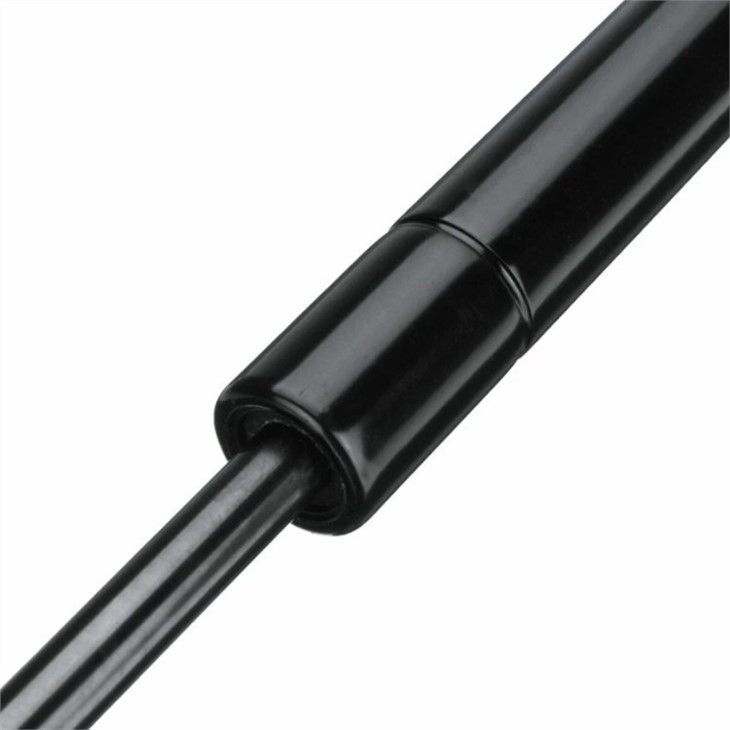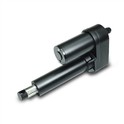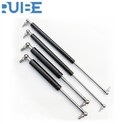In the automotive industry, gas springs and shock absorbers are two crucial components that play significant roles in enhancing the performance, comfort, and safety of vehicles. As a dedicated supplier of gas springs for cars, I am often asked about how these two elements work in conjunction. In this blog post, I will delve into the details of their operation and the synergistic relationship between them.
Understanding Gas Springs for Cars
Gas springs, also known as gas struts, are mechanical devices that use compressed gas (usually nitrogen) to generate force. They consist of a cylinder, a piston rod, a piston, and a valve. The cylinder is filled with high - pressure gas, and when the piston rod is pushed into or pulled out of the cylinder, the gas is compressed or expanded, creating a force that can be used to perform various functions.
In cars, gas springs have multiple applications. For instance, Bonnet Gas Spring is used to support the vehicle's bonnet, making it easier to open and close. It holds the bonnet in an open position securely, providing easy access to the engine compartment for maintenance and inspections. Gas springs are also used in trunk lids, where they assist in lifting and holding the lid open, and in some cases, help in closing it smoothly.
Another application is Gas Struts for Tool Box in cars. These gas struts are used to open and close the tool boxes installed in vehicles, ensuring easy access to tools while keeping the box securely closed during the vehicle's movement.
The Function of Shock Absorbers
Shock absorbers, on the other hand, are designed to control the movement of the vehicle's suspension system. They work by converting the kinetic energy generated by the up - and - down motion of the wheels (due to uneven road surfaces, bumps, or braking) into heat energy, which is then dissipated.
The basic structure of a shock absorber includes a cylinder filled with hydraulic fluid, a piston, and a series of valves. When the wheel hits a bump, the piston moves inside the cylinder, forcing the hydraulic fluid through small orifices in the valves. The resistance created by the fluid flowing through these small openings slows down the movement of the piston, and thus, the movement of the wheel and the vehicle body.
How Gas Springs and Shock Absorbers Work Together
Complementary Support
Gas springs and shock absorbers work in a complementary way to provide a smooth and stable ride. Gas springs are mainly responsible for providing a constant force to support the weight of certain parts of the vehicle, such as the bonnet or the trunk lid. They assist in the opening and closing process, reducing the effort required from the user.
Shock absorbers, however, focus on controlling the dynamic movement of the vehicle's suspension. When the vehicle is in motion, the shock absorbers dampen the vibrations and oscillations caused by the road irregularities. For example, when a car goes over a pothole, the shock absorber quickly responds to prevent the wheel from bouncing too much. The gas springs, meanwhile, keep the vehicle's body components in place and maintain the proper position of non - suspension parts.
Enhanced Comfort
The combination of gas springs and shock absorbers significantly enhances the comfort of the vehicle's occupants. Gas springs help in reducing the noise and vibration associated with the opening and closing of vehicle components. For example, a well - designed bonnet gas spring ensures that the bonnet closes gently without slamming, which reduces the noise inside the cabin.
Shock absorbers, on the other hand, smooth out the ride by absorbing the shocks from the road. They prevent the vehicle from bouncing excessively, which can cause discomfort to the passengers. By working together, gas springs and shock absorbers create a more pleasant driving experience.
Improved Safety
Safety is another area where the synergy between gas springs and shock absorbers is evident. Gas springs ensure that the vehicle's bonnet, trunk lid, and other components are securely held in place. A loose bonnet or trunk lid can pose a serious safety hazard, as it may fly open while the vehicle is in motion, obstructing the driver's view.
Shock absorbers play a vital role in maintaining the vehicle's stability and control. They help in keeping the tires in contact with the road surface, which is crucial for braking, steering, and overall vehicle handling. In emergency situations, such as sudden braking or swerving, shock absorbers ensure that the vehicle responds predictably, reducing the risk of accidents.
Applications in Different Types of Vehicles
Passenger Cars
In passenger cars, gas springs and shock absorbers are essential for providing a comfortable and safe ride. Bonnet gas springs make it easy for car owners to access the engine for maintenance, while shock absorbers ensure a smooth ride on various road conditions. The combination of these two components also contributes to the overall durability of the vehicle, as they reduce the stress on the suspension system and other vehicle parts.
Commercial Vehicles
Commercial vehicles, such as trucks and vans, also benefit from the use of gas springs and shock absorbers. Gas springs are used in large tool boxes and cargo doors, providing easy access to equipment and goods. Shock absorbers in commercial vehicles are designed to handle heavier loads, ensuring that the vehicle remains stable and comfortable even when fully loaded.
Luxury and Sports Cars
Luxury and sports cars often require high - performance gas springs and shock absorbers. Gas springs in these vehicles are designed to be more precise and reliable, providing a seamless opening and closing experience for components like the bonnet and trunk. Shock absorbers in luxury and sports cars are tuned to provide a balance between comfort and performance, allowing for a smooth ride while also maintaining excellent handling during high - speed driving.
The Importance of Quality Components
As a gas spring for car supplier, I understand the importance of providing high - quality components. Inferior gas springs may not provide the necessary force to support the vehicle's components properly, leading to issues such as a bonnet that won't stay open or a trunk lid that is difficult to close. Similarly, low - quality shock absorbers may not be able to effectively dampen the vibrations and shocks, resulting in a rough and uncomfortable ride.


When choosing gas springs and shock absorbers, it is crucial to consider factors such as the load capacity, durability, and compatibility with the vehicle. High - quality components are designed to withstand the harsh conditions of the automotive environment, including temperature variations, moisture, and mechanical stress.
Conclusion
Gas springs and shock absorbers are two essential components in the automotive industry that work in conjunction to provide a wide range of benefits, including enhanced comfort, improved safety, and better vehicle performance. As a gas spring for car supplier, I am committed to providing high - quality gas springs that meet the diverse needs of the automotive market.
If you are in the market for gas springs for your vehicles, whether it's Bonnet Gas Spring, Gas Struts for Tool Box, or Gas Spring for Storage Bed, I invite you to contact us for a detailed discussion about your requirements. Our team of experts is ready to assist you in finding the perfect gas springs for your specific applications.
References
- Automotive Suspension Systems: Principles and Design, John Wiley & Sons
- Handbook of Pneumatic and Hydraulic Actuators, CRC Press
- Gas Spring Technology: Theory and Applications, Springer






